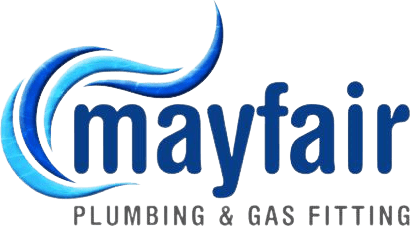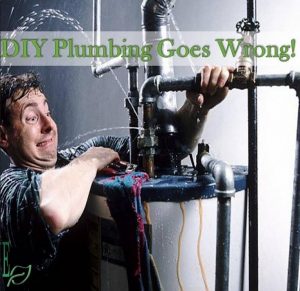If you’ve just purchased or looking to purchase a new home, or commercial property, you may be looking to get a pre-purchase or post-purchase plumbing inspection. How much should you expect to pay?
The price can vary significantly, typically falling between $500 and $1500. Factors such as property size, inspection depth, and geographic location all play a part. Read on to understand these variables and get a clear breakdown of potential costs for your specific situation without any fluff.
Key Points
Plumbing inspection costs vary significantly based on the property size, type, and the inspection’s complexity; residential costs can range from $335 to over $500, standard CCTV inspections average $335-$500 per hour, and sewer line inspections average $685 but can vary from $335 to $800.
Professional plumbing inspections help identify hidden issues early, potentially saving homeowners from expensive repairs, with costs influenced by factors like required technology (e.g., camera inspections ranging $335-$1,100) and property type, with older and commercial properties needing regular checks.
Complementary inspections like building and pest assessments should be considered for a thorough property evaluation, and it’s important to research and verify a plumbing inspector’s credentials and compare quotes thoughtfully to avoid hidden costs.
Plumbing Inspection Costs Breakdown
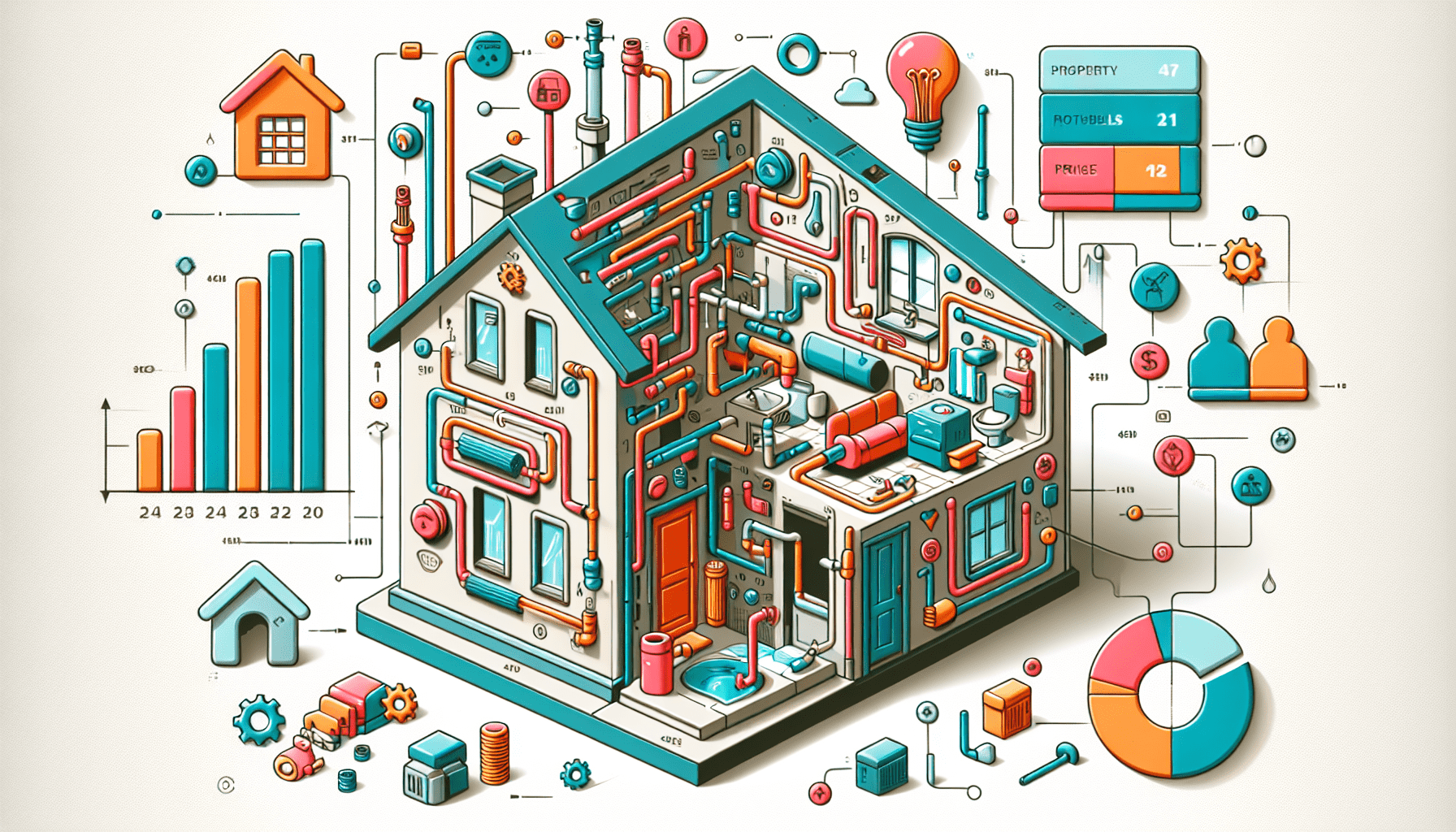
The cost of a plumbing inspection can vary due to several factors. The size and type of the property are major contributors, with commercial properties often requiring more extensive inspections than residential ones. For instance, smaller properties typically incur costs under $500, while larger or more complex buildings may result in fees up to $1500
To property size and complexity, the specific type of inspection also impacts its cost. A standard CCTV camera inspection for plumbing issues usually starts at around $335-500 per hour, with additional charges for extra time needed. On average nationally, sewer line camera inspections range from about $335-$800 depending on their scope and duration.
It’s essential to consider both the size/type of your building as well as the specific method used when estimating potential plumbing inspection costs.These variations play a crucial role in determining final prices that fall within these ranges mentioned above.
Pre-Purchase Plumbing Inspection
A pre-purchase plumbing inspection is highly beneficial for both home buyers and sellers, as it helps uncover any potential hidden plumbing issues in the property. Studies have shown that a significant number of inspected homes actually have underlying plumbing problems. The cost of this type of inspection can vary depending on the size and complexity of the property, with prices ranging from $500 to $1,500.
This thorough examination includes an evaluation of all aspects related to the property’s plumbing system such as fixtures, hot water supply, water pressure levels, toilets and leak detection. A detailed report will be provided after the inspection process, which will include visual documentation highlighting any necessary repairs or maintenance needed for your peace-of-mind.
In summary, a pre-purchase plumbing inspection entails a comprehensive assessment of the plumbing system within the property including fixtures,hot supply,water system functionality, toilets, and leak detection.This ensures that any concerns are properly documented and addressed in the post-inspection report.The overall cost for this service may vary depending on factors like size and complexity,ranging from$335 to$1000.However,the benefits outweigh these costs due to potential problems being identified early, ensuring buyer and seller satisfaction with a property free from hidden problems.
Visual Plumbing Inspection
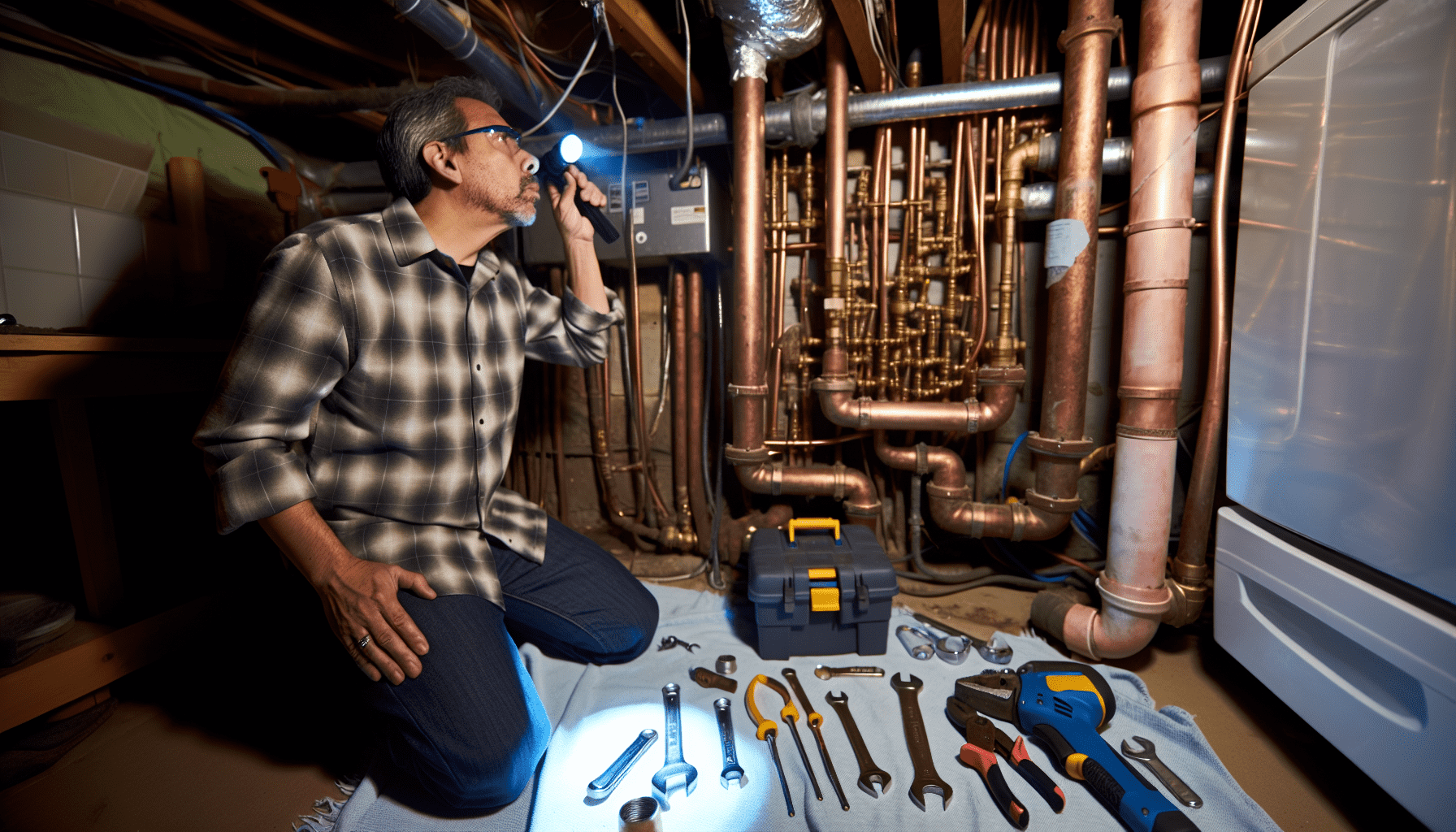
When conducting a visual plumbing inspection, the main objective is to carefully examine all visible water and sewer pipes for any potential leaks or signs of leakage. The duration of this type of inspection can vary depending on the complexity and size of the plumbing system, but typically lasts a few hours. In terms of cost, most companies charge between $335-$450 for these inspections.
The value that comes with having a visual plumbing inspection done goes beyond its price tag. This thorough examination often uncovers common issues such as blockages, pipe cracks or leaks, corrosion build-up in pipes/fixtures, inadequate water pressure levels and outdated systems, which could potentially lead to problems like property damage from warped structures or even decrease in overall property value.
One particular issue that CCTV drain inspections are especially useful in identifying is clogged drains. Whenever an issue arises during a routine visual plumbing check-up, swift measures are taken to address it promptly based on how serious it may be, whether simple repairs will suffice or more extensive work needs to be carried out instead.
Camera Plumbing Inspection
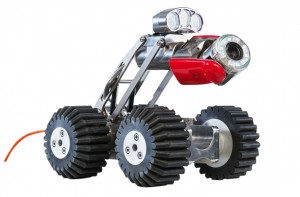
A camera plumbing inspection is a modern technique used to identify hidden issues within walls, ceilings or under floors. It involves the use of advanced technology such as crawler cameras, fixed zoom cameras and push rod cameras operated by skilled plumbers. These tools internally inspect pipes, capturing photos and videos that are displayed on a dedicated monitor for review.
This type of inspection efficiently detects common plumbing problems without causing disruptions. It can accurately pinpoint blockages sources, different types of pipe damage including clogs and leaks caused by root intrusion or general wear and tear. Typically lasting around 30 minutes, but may vary depending on complexity. Camera inspections cost approximately $335-$1,100.
When to Schedule a Plumbing Inspection
A plumbing inspection scheduled at an appropriate time can alleviate stress and be cost-effective. It is a crucial step during the home buying process, as it helps identify potential issues such as dampness under sinks, wet spots around toilets and tubs, discoloration or mold growth in certain areas of the house. This thorough check by a professional plumber ensures that all fixtures are functioning properly.
For those residing in older properties where common problems like corroded pipes and decreased water pressure may exist, conducting regular plumbing inspections is highly recommended. Other signs indicating possible underlying plumbing issues include slow drains, stark rise in water bills, paint bubbles on walls/ceilings, and unpleasant odours throughout the property.Most importantly, it allows early detection of failing sewer lines, which can save homeowners from expensive repairs down the line.
Commercial buildings should also prioritise routine inspections every one to two years depending on factors like building size, type of business operating, and age.The importance remains consistent despite these variables since damages found early on into resources might have gone waste if left unnoticed. These checks help maintain healthy conditions within commercial establishments, preserving their reputation with employees/consumers.
Alongside benefiting financial interests, a conscientious attitude towards periodic surveys shows responsible resource management including effective maintenance ensuring smooth operations.
Home Buying or Selling
Plumbing inspections play a crucial role in real estate transactions by ensuring the proper functioning of the property’s plumbing system. This not only helps potential buyers avoid expensive repairs, but also allows sellers to showcase a well-maintained home. Prior to purchasing a residential property, it is important to conduct an inspection that thoroughly examines all aspects of the plumbing system including checking for water or gas leaks, assessing pipe conditions and identifying any possible issues.
During this assessment process, both interior and exterior areas are thoroughly examined with special attention paid to critical components such as the roof and under-floor spaces. This provides buyers with a comprehensive evaluation of their potential investment.
The final report from this pre-purchase plumbing inspection contains detailed written observations along with accompanying photos depicting the state of each aspect within your home’s plumbing system, making it valuable information for both parties involved in this transaction.
Older Homes and Recurring Issues
Regular plumbing inspections are highly important for homeowners residing in older houses. Common issues that arise with the ageing of a home’s plumbing system include outdated fixtures, corrosion, restricted water flow, leaks and galvanised pipes. These problems often reappear due to regular usage and wear on the infrastructure leading to deterioration such as leaks or corrosion.
To maintain the integrity and functionality of an older home’s plumbing system, it is recommended to conduct inspections every 1-2 years. This can help prevent significant damage like burst pipes or structural water damage, which could be costly for homeowners if left undetected. By identifying specific issues through these frequent checks (including corroded pipes or outdated fixtures), licensed plumbers can implement solutions like pipe replacements, updates, repairs while minimising costs.
Overall, conducting routine check-ups by a plumber in older homes is important not only because they reveal hidden underlying problems but also contribute towards cutting down expenses potentially saving thousands of dollars over time.
Signs of Potential Plumbing Problems
Being able to recognise potential signs of plumbing problems is crucial in promptly addressing them and avoiding expensive repairs or major damage. Typical indicators of a possible plumbing issue in homes include: slow drainage, unexpected increases in water bills, bubbling paint on walls or ceilings, burst pipes, leaking toilets and taps. Other red flags could be blocked drains, cloudy/discoloured water supply, and unusual noises/odours.
For commercial properties, low water pressure,malfunctioning hot water/heating systems, persistently clogged/slow-draining fixtures are warning signals for potential issues with the building’s plumbing system.Specific symptoms that require professional inspection include discoloured tap water (likely caused by rust buildup), persistent leaks such as ceiling leakage, gas appliance-related carbon monoxide emissions, and pipe leaks requiring prompt attention from trained plumbers.
Benefits of Professional Plumbing Inspections
Professional plumbing inspections offer a range of advantages. The use of specialised tools like chisels, CCTV equipment and pipe cameras by plumbers enable thorough assessments. Their skills in reading blueprints, fitting pipes and troubleshooting ensure comprehensive evaluations.
Early identification through professional plumbing inspections helps prevent expensive repairs or damages to the system. This can result in significant cost savings as issues such as leaks or damaged pipes are detected early on.
Expertise and Equipment
Examining the skills and expertise of a professional plumber shows their capability to perform a comprehensive inspection. They are trained in skills such as:
Pipe fitting
Soldering
Troubleshooting
Reading building plans
Customer service
Their knowledge in studying building plans and specifications helps determine the layout of plumbing systems and materials required. They possess inspection skills, detection skills, and repairing skills which are essential for solving major plumbing issues.
Additional Inspections to Consider
While plumbing inspections are important when purchasing a property, there are other types of inspections to consider as well. To gain a comprehensive understanding of the condition of a property, building and pest inspections should also be taken into account.
A building inspection involves identifying any current or potential issues within the structure, evaluating defects, and overall assessing its state. Meanwhile, a pest inspection ensures that the property is free from infestations. These can both overlap with problems with the plumbing of a property.
These additional examinations come with their own associated expenses which can vary depending on factors such as size and scope of inspection. In Australia, the average cost for a building inspection ranges between $335 to $565 while an individual pre-purchase pest examination typically costs anywhere from $335 to $500.
Undertaking both these assessments simultaneously through combined packages may result in savings in terms of time and money compared to opting for separate ones.The approximate charge for such joint evaluations falls around $500-$550. However, it provides thorough scrutiny ensuring no aspect goes unchecked unlike conducting them separately.
Tips for Hiring a Plumber For Inspections
When it comes to hiring a professional in Australia, many plumbers carry out pre and post purchase inspections. In other countries such as the USA, it’s common that there are dedicated inspectors. One useful tip is to thoroughly research and read reviews about potential inspectors in order gain insights into their reputation and level of customer satisfaction.
Another important aspect is verifying the credentials of the plumber being hired for inspection services. This includes checking that they possess all necessary documents, have undergone comprehensive training which covers education, apprenticeship, licensing and continuous learning. It’s also essential for an inspector to have a thorough knowledge of various documentation related regulations such as manufacturer manuals or building plans.
To ensure authenticity, one can verify these credentials by checking with relevant regulatory bodies like the Master Builders Australia website regarding registration or license status held by an individual plumber you’re considering engaging for conducting inspections.
Research and Reviews
When searching for a plumbing inspector, it is important to consider the following factors:
- their level of thoroughness and the quality of their work, recommendations from previous clients, certifications and licenses they hold in the industry, as well as their field experience and expertise.
- Reviews can also be helpful in evaluating a plumbing inspector’s performance by looking at aspects such as how comprehensive they are with inspections, reliability levels and overall customer satisfaction.
- It is essential to pay attention to any warning signs that may come up while reading reviews about potential inspectors. These could include recurring issues related to water pressure or problems like leaks not being properly addressed. It is also worth noting if there have been complaints about unprofessional behaviour exhibited by an inspector during interactions with clients or lack of proper licensing or insurance coverage for carrying out these services.
- Multiple negative customer reviews should also raise concerns regarding overall dissatisfaction.
To ensure that you hire someone who meets all necessary requirements within your state/country when it comes down specifically towards inspecting different types of building materials, some regulatory bodies require various formalities including possessing relevant registrations/licensing before operating.
Comparing Quotes
When comparing quotes for a plumbing inspection, it is important to consider standard industry estimates, your specific budgetary needs, the scope and accessibility of the job, and any included materials or expenses.
Negotiating the cost of a plumbing inspection can be done by carefully reviewing the inspection report and using it as a basis for discussing potential repairs or adjustments in price.
It may also be helpful to have knowledge about typical repair costs in order to strengthen negotiations efforts. Proposing shared responsibility for repair costs or accepting credit instead of direct repairs are options that could potentially lower overall expenses.
While examining quotes for plumbing inspections, caution should be exercised towards hidden fees such as unexpected recommended repairs or replacements from the report itself. Other additional costs may arise if issues like substandard tiling are discovered during an examination process with obscured access points leading to Expenditures.
Final Points
Understanding the costs, benefits, and processes of plumbing inspections can save you from potential expensive repairs and ensure your property’s plumbing system is in optimal condition. Whether you’re buying or selling a home, living in an older property, or noticing signs of potential plumbing issues, scheduling regular inspections with a professional and reputable plumbing inspector is an investment that pays off in the long run. Remember, prevention is always better and cheaper than cure!
Frequently Asked Questions
How do I know if my plumbing is bad?
If the water pressure in your home is low, you notice bubbles forming on your walls or there’s dampness present, it could indicate a significant plumbing problem. It’s crucial to seek assistance from an expert plumber who can locate and resolve any potential leaks in order to prevent damage.
How much does a building and pest inspection cost in Adelaide?
The cost of a building or pest inspection in Adelaide starts from $495 inc GST, while a combined inspection starts from $595 inc GST, and may vary based on property type and size, and renovation status.
How much does a building inspection cost SA?
The expenses associated with building inspections in SA differ based on the specific area and size of the property being inspected.
What factors contribute to the cost of a plumbing inspection?
The cost of conducting a plumbing inspection is impacted by various elements, including the size and type of property being inspected as well as the specific type of inspection that is conducted. These factors play a role in determining the overall expense for this service.
When should I schedule a plumbing inspection?
An inspection of the plumbing should be scheduled when purchasing or selling a home, residing in an older residence with ongoing problems, or observing indications of potential issues. It is important not to delay and let any concerns worsen.
